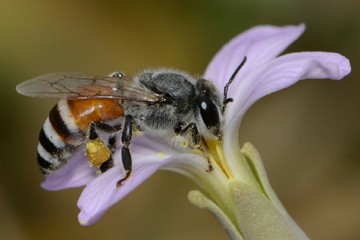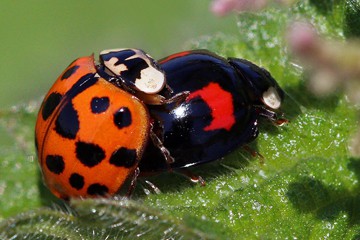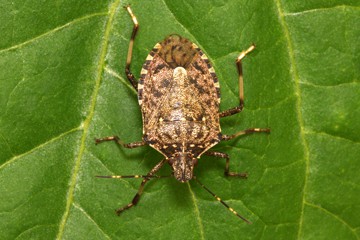Tim Low introduces Insect Watch, our new online portal profiling just some of the overseas insect species that would pose significant threats to Australia if they ever became established in our country. This is a handy guide for anyone interested in identifying and reporting potential new pest species.
In this fast-changing world, nature observation has become important to Australia’s security. The government concedes it can’t keep out all the harmful pests roaming the globe, and advocates a continuum of quarantine, whereby all Australians can help detect new pests.
Naturalists and nature photographers have much to offer as specialised observers of the little creatures around us. They have the skills and interest to notice novel species. The internet and smartphones have made it much easier to record and identify insects in these globalised times when more pests are arriving. Observing and identifying insects is fun, all the more so if it can help save Australia from damaging pests.
Of the foreign insects found inside Australia in recent years only about 14 per cent have been detected at the border by officials checking passengers and cargo [1]. All the rest were discovered out in the landscape, often when goods were unpacked in a warehouse or home, or out in a field or garden.
The western yellowjacket is a North American wasp that if it made it into Australia would be a serious predator of native insects.
Photo Sarah McCaffrey | Museums Victoria
Funding for border inspections is so scanty that most of the 3 million shipping containers entering Australia each year – about 89% of them – are not checked at all for pests of any kind [2].
The Inspector-general of Biosecurity, Helen Scott-Orr, estimated in 2018 that more than 20,000 of those unchecked containers would have brought in soil, seeds or other contaminants [2]. She warned of the unmitigated risk of invasive ants and other serious pests entering on ‘thousands of soil-encrusted containers’ [3]. A shipping container stored overseas on damp ground before it is loaded can easily transport lumps of mud with insects, mites, snails and worms.
Australia was not taking these huge risks in the past. Before 2010, every arriving shipping container was inspected [4]. The change has come because trade has grown, the pool of overseas pests has increased, and funding has fallen further behind as governments prioritised tax cuts over the public good.
All those soiled containers are only one source of risk. Insects also travel in ‘clean’ containers when these carry flowers and fresh fruit and vegetables. Border inspections of flowers yielded 15,500 detections of live insects and mites in the period from March 2018 to the end of 2019 [6]. Most of the 120 million flowers entering Australia in a typical year [5] are not inspected, so we can only guess how many insects get through.
Shipping containers reach Sydney in such large numbers that only a small proportion are inspected for pests.
Photo: Aaron Jacobs | CC BY-SA 2.0
The Invasive Species Council has created the Insect Watch portal to promote interest in foreign insects of concern. All the species featured here pose threats to the environment, and they are economic threats as well.
Five (four ants and two bees) occur in limited areas of Australia already and the hope is they can be eliminated entirely (three ants) or prevented from spreading. The other species are not, as far as we know, found in Australia, although most have been intercepted multiple times at the border. The ants targeted for eradication are certain to revisit Australia in the future, so vigilance by the community will always be essential.
Only a few of the insects of concern are featured on Insect Watch. These were chosen because they are particularly worrying and also feasible for the non-scientist to identify, up to a point – many of these species are difficult to identify definitively, and what our guide does is narrow identification far enough that an approach to the authorities is justified.
There are hundreds of other insects that should be kept out of Australia, including many ants, wasps and bugs. If your insect is not in our guide, don’t automatically assume it is a native species.
For examples of other unwanted foreign species the PaDIL website can be consulted. It has photos of mounted specimens, but no advice about identifying features. It includes native pest insects as well as foreign species, so look for those labelled ‘Exotic species’.
If you have strong reasons to suspect you have found something that shouldn’t be here, phone the Exotic Plant Pest Hotline: 1800 084 881.
References
- Caley P, Ingram R De Barro P. (2015) Entry of exotic insects into Australia: Does border interception count match incursion risk? Biological Invasions. 17: 1087–1094 DOI 10.1007/s10530-014-0777-z
- Inspector-General of Biosecurity (2018). Hitchhiker pest and contaminant biosecurity risk management in Australia. Review report No. 2017–18/02 Canberra: Department of Agriculture and Water Resources.
- Inspector-General of Biosecurity (2019). Implementation of Inspector-General of Biosecurity recommendations. Review report No. 2019–20/02 Canberra: Department of Agriculture and Water Resources.
- Inspector-General of Biosecurity (2018). Hitchhiker pest and contaminant biosecurity risk management in Australia. Review report No. 2017–18/02 Canberra: Department of Agriculture and Water Resources.
- Interim Inspector-General of Biosecurity (2015). Effectiveness of biosecurity controls for imported fresh cut flowers. No. 2014–15/01 Canberra: Department of Agriculture and Water Resources.
- Department of Agriculture, Water and the Environment (2020) Draft Pest Risk Analysis for Cut Flower and Foliage Imports—Part 2.




